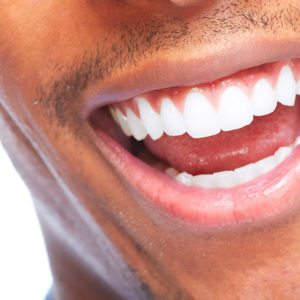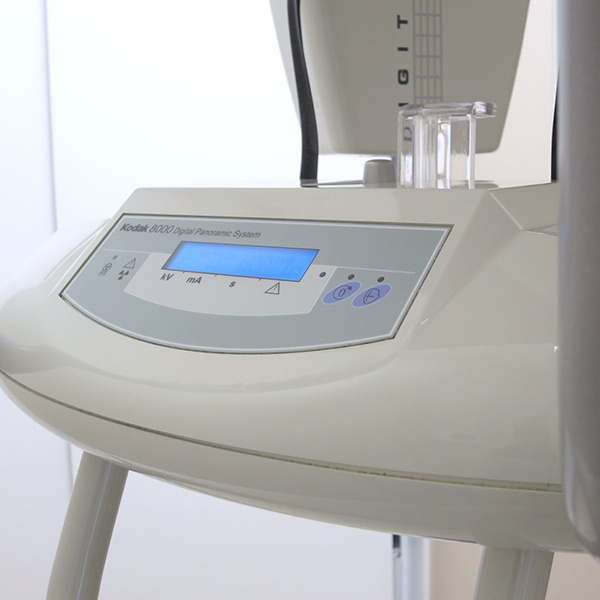
Symptoms of gum disease include:
- Bad breath that won’t go away
- Red or swollen gums
- Tender or bleeding gums
- Painful chewing
- Loose teeth
- Sensitive teeth
- Receeding gums or apparent lengthening of teeth
Any of these symptoms may be a sign of a serious problem that should be checked by a dentist. At your dental visit, the dentist or hygienist should:
- Ask about your medical history to identify underlying conditions or risk factors (such as smoking) that may contribute to gum disease.
- Examine your gums and note any signs of inflammation.
- Use a tiny ruler called a “probe” to check for and measure any pockets. In a healthy mouth, the depth of these pockets is usually between 1 and 3 millimeters. This test for pocket depth is usually painless.
- Smoking. Need another reason to quit smoking? Smoking is one of the most significant risk factors associated with the development of gum disease. Additionally, smoking can lower the chances for successful treatment.
- Hormonal changes in girls/women. These changes can make gums more sensitive and make it easier for gingivitis to develop.
- Diabetes. People with diabetes are at higher risk for developing infections, including gum disease.
- Other illnesses and their treatments. Diseases such as AIDS and its treatments can also negatively affect the health of gums, as can treatments for cancer.
- Medications. There are hundreds of prescription and over the counter medications that can reduce the flow of saliva, which has a protective effect on the mouth. Without enough saliva, the mouth is vulnerable to infections such as gum disease. And some medicines can cause abnormal overgrowth of the gum tissue; this can make it difficult to keep teeth and gums clean.
- Genetic susceptibility. Some people are more prone to severe gum disease than others.
The main goal of treatment is to control the infection. The number and types of treatment will vary, depending on the extent of the gum disease. Any type of treatment requires that the patient keep up good daily care at home. The doctor may also suggest changing certain behaviours, such as quitting smoking, as a way to improve treatment outcome.
The dentist, periodontist, or dental hygienist removes the plaque through a deep-cleaning method called scaling and root planing. Scaling consists of scraping the tartar off of teeth both above and below the gum line. Root planing gets rid of rough spots on the tooth root where germs gather and helps remove bacteria that contribute to the disease. In some cases a laser may be used to remove plaque and tartar. This procedure can result in less bleeding, swelling, and discomfort compared to traditional deep cleaning methods.
- Brush your teeth twice a day (with a fluoride toothpaste).
- Floss regularly to remove plaque from between teeth. Or use a device such as a special brush or wooden or plastic pick recommended by a dental professional.
- Visit the dentist routinely for a check-up and professional cleaning.
- Don’t smoke





Hello Dr. Qin Li,
I have been having pain and swelling in my back left bottom molars. I went to a dentist already on Wednesday they said there was no sign of infection yet, but I told her that I have a history of gum disease which could hide the infection. My doctor did x-rays and he told me there was debris near the root of my tooth which is causing the pain. I went 48 hours ago but I am still in the same amount of pain, I cannot close my mouth and I cannot eat anything solid. The tooth feels loose now and the swelling has not gone down at all, but also has not increased.
Should I see a different dentist at this point? The dentist I visited told me to wait a week and if the pain didn’t subside by then to go back in, and 2 weeks she will check if it’s 100% healed. This seems like a long time for a non-invasive procedure to be causing such a huge amount of discomfort.
Thank you for taking the time to answer my question,
Joe
Hi Joe, from your question I am not too clear on what non-invasive procedure was performed that is causing you a huge amount of discomfort. Are you referring to something the dentist did to “remove the debris from near the root of your tooth”? Has the tooth in question ever had a root canal treatment or a deep cleaning to treat your gum disease? My suggestion is to call your dentist and explain the pain and the looseness in your tooth and see if they have any further recommendations or can do something for you for the pain and discomfort.
My gum hurts just around my wisdom tooth and I can barely open my mouth it is to sore. I don’t know what the problem is.
Hi Demi, please see a dentist as soon as possible. It could be an abscess developing around your wisdom tooth that could have serious consequences if left untreated.
my gums are red around three back teeth on bottom. x rays and exam show nothing. have been like this for 3 months. what can i do?
Hi Richard, there are many factors that can cause redness of the gums. Some of the more common causes are gum disease, dental infection, fungal infection, and dry mouth. External factors are sometimes a cause; these can include switching to a new toothpaste or toothbrush, changing brushing technique, eating hard and abrasive foods, chemical burns from chewing tobacco, smoking, vaping or even cinnamon flavoured candy, biting the cheek, or dental appliances (e.g. denture, sleep apnea appliance, night guard) that could be rubbing the gum. If all of above have been ruled out by your dentist, you can ask for a referral to a specialist in oral medicine or an oral surgeon and they will help you determine if a biopsy of the area is needed.
Hello I found white circle things on the back of my gums below the bottom teeth at side in the inside of my gums was just wondering if that’s normal? I have a dentist appointment in 2 weeks but am really freaking out about it
HI Carla,
Unfortunately, I cannot tell what the white circles are on the back of your gums without a physical exam. But I wouldn’t lose too much sleep over it; it could be something as simple as plaque and tartar buildup, or canker or cold sores if they are on your gum. Definitely have them checked out at your dentist appointment. If you are really concerned or if it is causing some discomfort, try to see if your dentist has any last minute cancellations at the beginning of the day to squeeze you in for an earlier appointment.
Hi there,
I’ve been experiencing some pain in the back of my mouth and chalked it up to my wisdom tooth coming in but noticed that I’ve also had really bad breath and bleeding from my gums for the last couple days. I took a closer look in my mouth and it almost looks like there is a dark gap or opening right against my molar.
I thought it was food at first but upon closer inspection it looks like its the source of the bleeding and when I pull on my cheek the gap widens.
I need some advice on how to proceed.
Many thanks.
Hi Gabby, unfortunately, it’s not possible to provide any advice on your condition without an in-person exam. Please book an appointment with a dentist soon to see what is causing the bleeding and pain.
My dentist did a 3D scan and said I have 4 molars where there is a gab under the tooth and needs to be filled. He used a laser to cut away the area. He took a blood sample and extracted stem cells into a blob that he inserted into the gabs under the tooth. What is the name of this procedure and is this a necessary procedure?
Hi Frank, the procedure you are describing sounds a lot like Platelet-Rich Fibrin (PRF) or Leukocyte- and Platelet-Rich Fibrin (L-PRF). It is used with increasing popularity in ridge preservation/bone regeneration after a tooth extraction and periodontal regeneration in dentistry.
However, I cannot be certain if this was the particular procedure you had and without an in-person exam or knowledge of your dental history I cannot comment on whether the procedure was necessary. If you have any concerns, please discuss them with your dentist.
Is sensodyne mouthwash good for gum health and helping reverse gum disease?
Hi Morgen, the active ingredients in Sensodyne mouthwash are potassium nitrate which helps reduce tooth sensitivity, and sodium fluoride which is for strengthening tooth structure. There are no active ingredients in Sensodyne mouthrinse that have been shown to reverse gum disease. Please consult with your dentist or hygienist for a mouthrinse based on your gum condition.
Hi Dr. Li,
What might be causing my excess tartar buildup? I brush and floss after every meal and I’ve drastically reduced my carb intake. Consequently, my intake of fats and proteins has increased but I read that they don’t contribute to plaque. I’ve also noticed that my mouth feels quite acidic sometimes. My cheeks are irritated due to Invisalign attachments and mouthwash seems to make things worse. Is there anything I can do to help reduce the tartar? Thanks!
Hi Pooh, it’s hard to say what’s causing your excess tartar buildup. In general, there is more tartar buildup in the tongue side of the lower front teeth because of the proximity of those teeth to a major salivary gland. Try to discuss the situation with your dentist and hygienist to see if there is room for improvement with your brushing and flossing techniques. If you are currently wearing Invisalign liners, make sure both your teeth and liners are properly cleaned prior to use.
My dentist recently discovered little bumps on my gums, specifically in the front of my mouth. I have a few in the back, but mostly in the front. I bleach my teeth a lot at home and I just found out I have HPV. Could those potentially cause little bumps on gums?
Hi Anna, without a proper diagnosis and possible biopsies. I cannot tell you what’s causing the little bumps on your gum.
Oral lesions or “bumps” from the human papilloma viruses (HPVs) are not uncommon, and can have different appearances. From “Contemporary Oral and Maxilloficial Pathology 2nd edition, Sapp et al.”: Oral lesions from HPV could appear as a single or multiple bumps, often with a papillary (warty) surface. Some will have fine hairline surface projections. They may be raised with thin stalks or flat and diffuse on a broad base. Most are whitish but the flatter broad based lesions may be reddish or the pink color of normal oral mucosa.
A visit to an oral pathologist may help to diagnose those bumps.